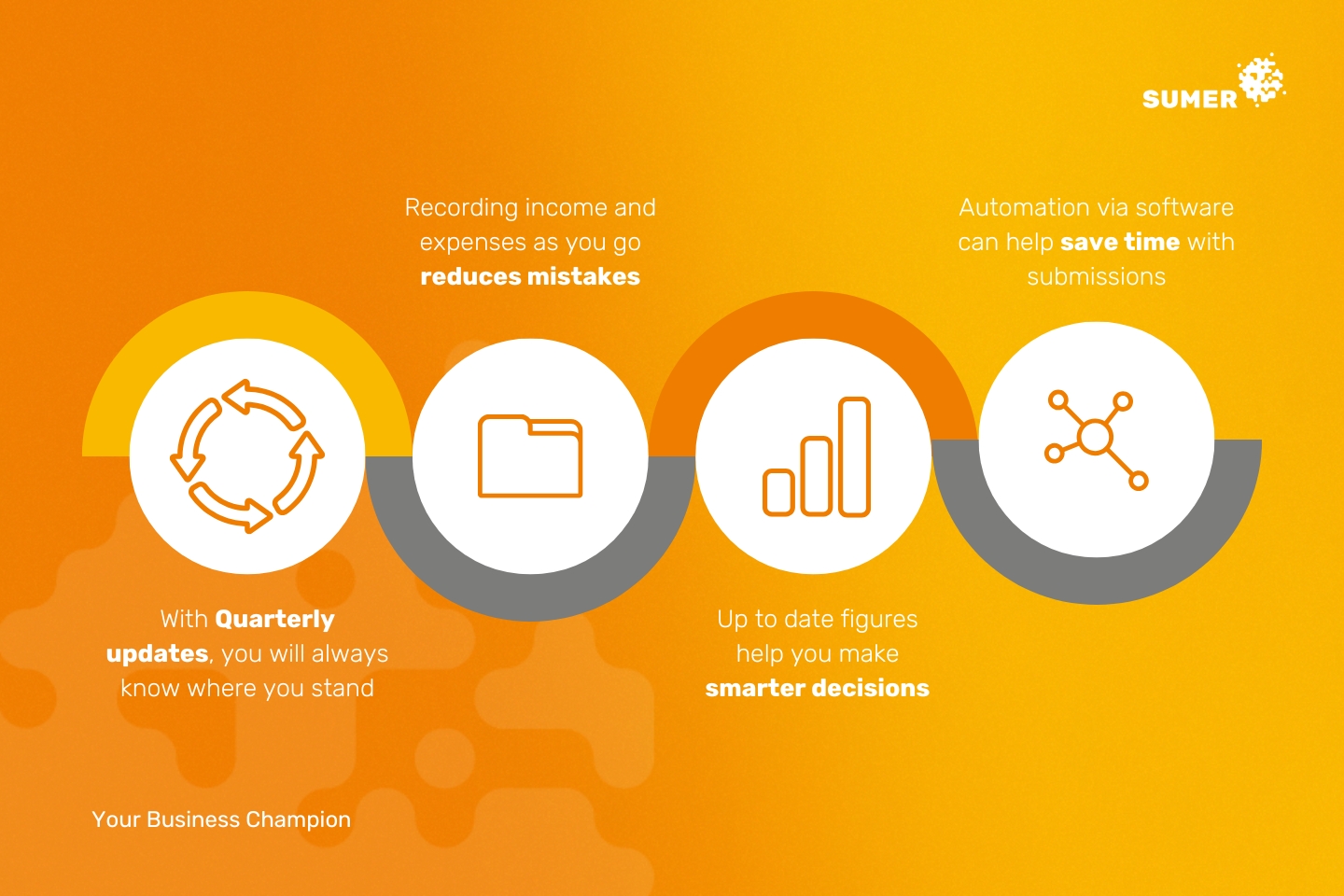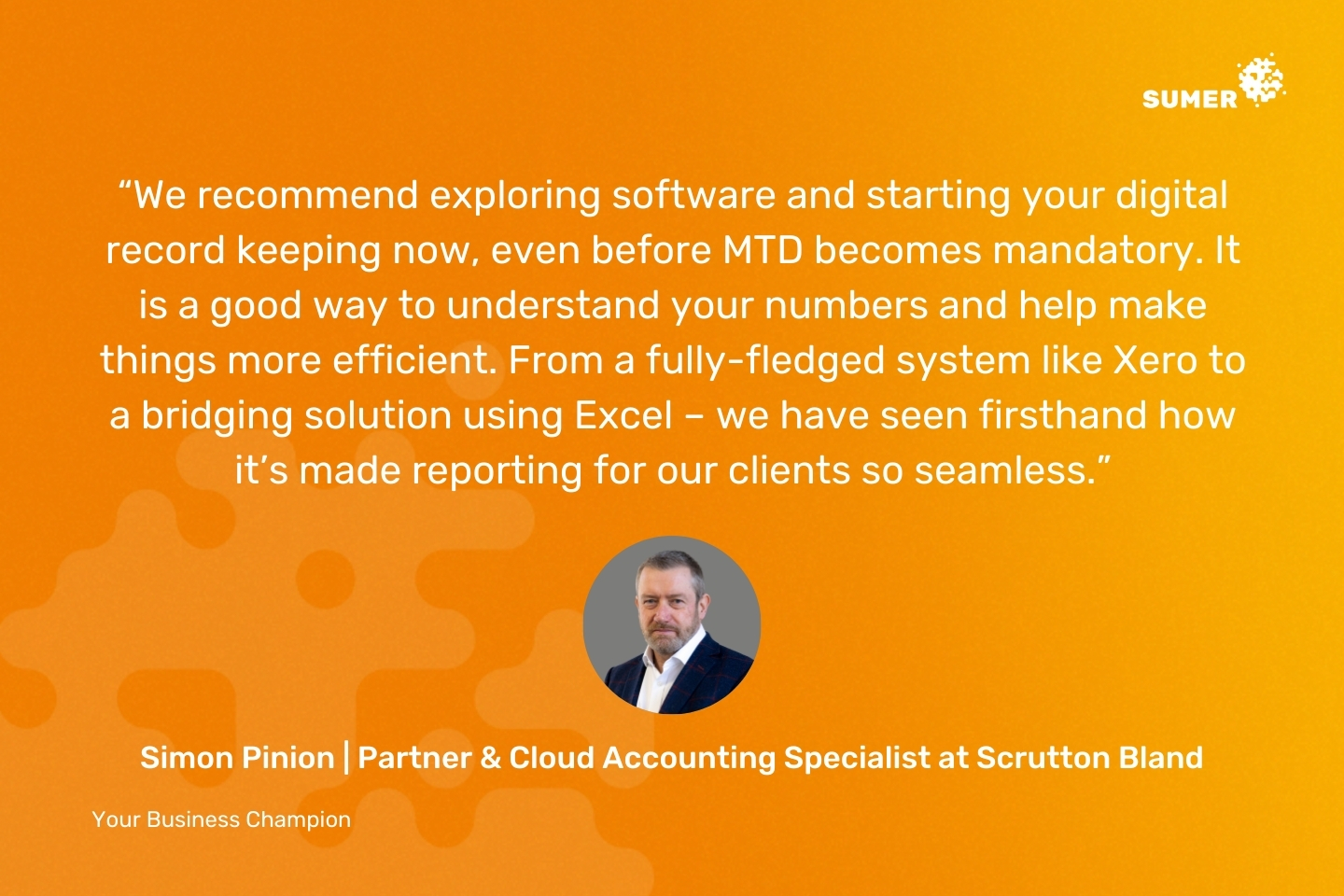Making Tax Digital for Income Tax: Are You Prepared?
Making Tax Digital for ITSA will partially replace self-assessment tax returns with four quarterly returns and an annual return, as part of the government’s plan to create a tax system fit for the digital age, following on from the successful Making Tax Digital for VAT rollout back in 2019.
From April 2026, if you are a sole trader or landlord with income over £50,000, you will need to:
- Keep digital records of your income and expenses
- Use MTD compatible software
- Submit quarterly updates to HMRC
- Complete an end of year statement ‘A Digital Tax Return’
Why are HMRC making the change?
Making Tax Digital for Income Tax Self-Assessment is part of the governments roadmap to digitalise the tax system, with the aim of improving accuracy, visibility, and decision-making.
At first glance, Making Tax Digital for ITSA might seem like more work, but done properly, it can make your life easier:
"Making Tax Digital is more than just a compliance requirement, it's an opportunity to streamline your accounting and gain real-time insight into your finances with improved accuracy and efficiency."

Angela Haig | Partner at EQ
When will I need to make my submissions?
A quarterly update of your income and expenses will need to be digitally submitted to HMRC. Instead of the earlier annual only submissions. The quarterly submissions will be on a cumulative basis, with the deadline for each being just over a month after the reporting period. A separate submission will be needed for each trade or property business. So, for example, if you are self-employed and have rental income, eight submissions will be required each year. Examples are shown in the table below:
| Period Reported | Due Date |
|---|---|
| 6 April to 5 July | Due 7 August |
| 6 April to 5 October | Due 7 November |
| 6 April to 5 January | Due 7 February |
| 6 April to 5 April | Due 7 May |
| Final Declaration | Due 31 January after the end of the tax year |
| Submission | Period Reported | Due Date |
|---|---|---|
| Q1 | 6 April 2026 to 5 July 2026 | 7 August 2026 |
| Q2 | 6 April 2026 to 5 October 2026 | 7 November 2026 |
| Q3 | 6 April 2026 to 5 January 2026 | 7 February 2027 |
| Q4 | 6 April 2026 to 5 April 2026 | 7 May 2027 |
| Final Declaration | 6 April 2026 to 5 April 2027 | 31 January 2028 |
What are the penalties for non-compliance?
Keeping digital records and submitting these using approved software is mandatory under Making Tax Digital (MTD). You may receive a fine from HMRC if you don’t follow the rules.
A points system will be kept for a 24-month period. There will be no penalty for the first late filing in that period, but thereafter each late filing could lead to a £200 penalty.
How can I get ahead and prepare?
April 2026 might sound a while away, but if you want a smooth transition, the time to act is now. Here’s how to get started:
- Find out if you are affected
- Get digital ready and choose the right software for you
- Start practicing with the software you have chosen
Everyone will have different needs, dependent on the complexity and frequency of their income and expenses. Some people may just need to prepare a spreadsheet; however, others might need the support of a MTD software. HMRC have created a list of approved software suppliers.
Looking Ahead
Right now, MTD for ITSA applies only to self-employed people and landlords with income over £50,000. But it is important to bear in mind that from April 2027, the same rules will apply to those earning more than £30,000 and then be introduced for those earning £20,000 for the 2026 to 2027 tax year, so it’s important to ensure you are aware of the changes and that you get prepared.
How can Sumer help?
Our champions will be able to offer solutions to assist with the preparation of MTD filings. Please get in touch with your local business champion here.





